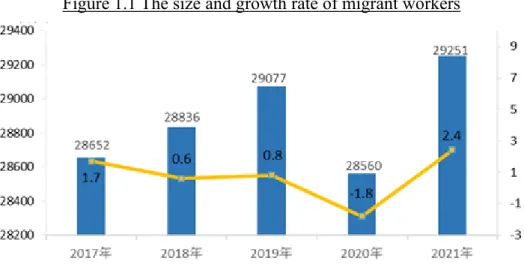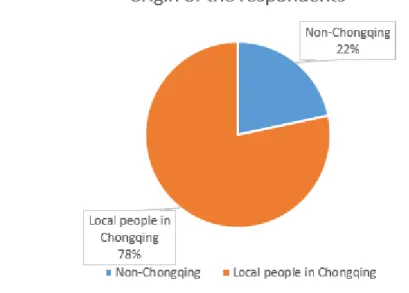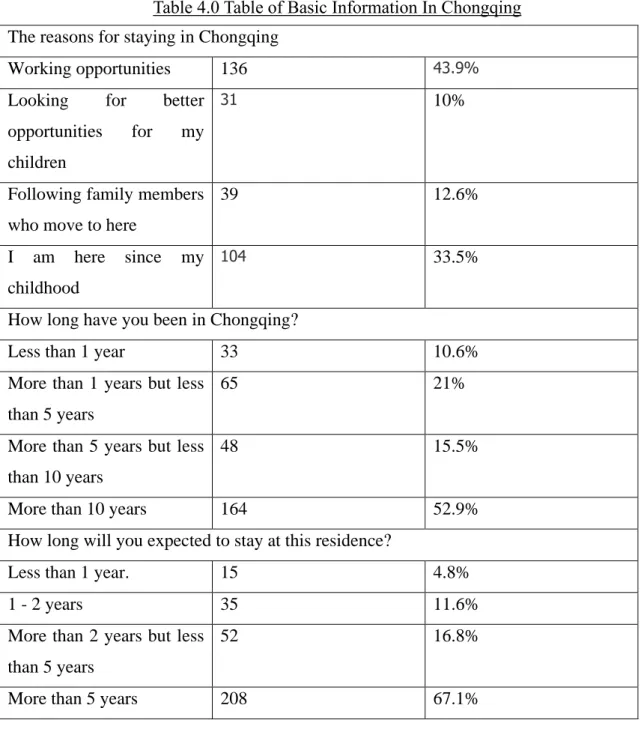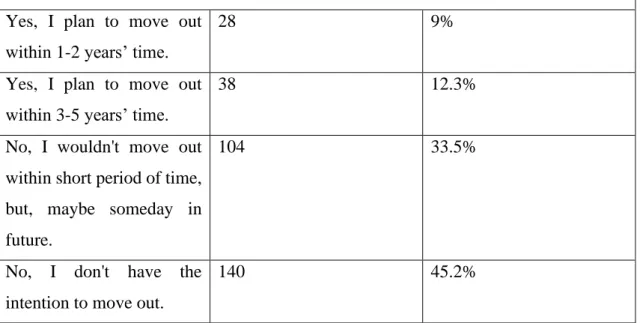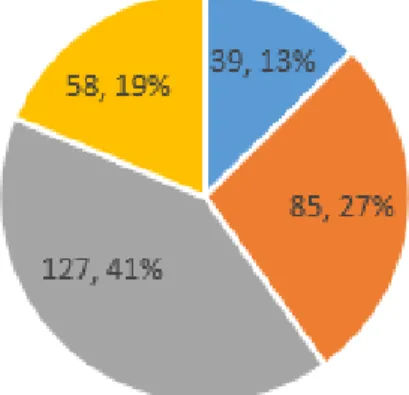In addition, I would like to thank my friends and classmates for their great support and help in preparing the thesis, which has given me a lot of inspiration. Finally, the property management company should pay more attention to the individual needs of the tenants, try to understand the general needs of the tenants and start from the interests of the tenants. At the same time, the property management team understands the special needs of the residents and caters to the aforementioned individual needs of the residents.
INTRODUCTION
- Introduction
- Research Background
- Problem Statement
- Research Questions
- Research Objectives
- Significance of the Study
- Study Scope
- Research Flow Chart
- Chapter Layout
Because of these differences, the property management of public rental housing differs to a certain extent from traditional property management. Accordingly, this paper will combine the characteristics of public housing and the current management situation of real estate companies to provide a more in-depth exploration of public housing property management. Accordingly, this paper will combine the characteristics of public rental housing and the current situation of property management companies to provide a more in-depth exploration of public rental housing property management.
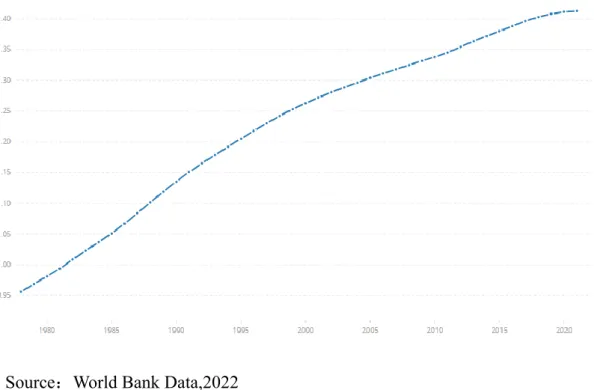
LITERATURE REVIEW
- Introduction
- Property Management in China
- Current Problem in Property Management
- Customer Satisfaction
- Residents’ Satisfaction
- Service Quality Evaluation Model
- SERVQUAL
- SERVREF Model
- Relationship Between Service Quality and Customer Satisfaction
- Property service quality evaluation system
- Tangible
- Reliability
- Responsiveness
- Assurance
- Empathy
- Proposed Theoretical Framework
- Conclusion
The main problems reflected in current property management services can be divided into legal stability, lack of mutual trust, poor performance of property companies and non-payment of fees by property owners. However, some deep-rooted issues in property management, such as regulating the relationship between owners' organizations and other organizations and handing over property management authority, still lack functioning regulations (Wang, 2013). The property management commission rate is below 80%, and real estate companies will have difficulty maintaining normal management activities.
On the other hand, the reasons for problems in property management services can be divided into lack of property management concept, property companies operating at a loss, lack of talents in property management industry and improper management. Today, there are still many people whose understanding of property management is stuck in the unit management or housing management mode of the planned economy, and both property companies and property owners are immature in their understanding of property management. Ultimately, the quality of the property management team is low and there is a shortage of talent.
The essence of property management is service, and improving service awareness is a prerequisite for the healthy development of the property management industry. Peter Barrett's (2003) property management system theory refers to an owner-centered approach to improving the quality of service and living conditions that guides the development of property management. Peter Barrett's theory focuses on owner feedback and timely process processing in the property management process applied to actual management services, resulting in highly efficient, satisfactory and Joseph W.
Decarlo (1997) argued that property management refers to the property management company that operates and manages the related property activities under the condition of the property owner's commission to create more property value, so as to achieve the revenue target of property management activities. This was due, on the one hand, to the backwardness of the service concept of real estate management in China and, on the other hand, to the lack of community awareness among Chinese urban residents. In conclusion, we can conclude that, by combining the above literature, since Zeithaml proposed the service quality model in 1988, most of the studies have been conducted using the service quality model applied to various real estate management models.
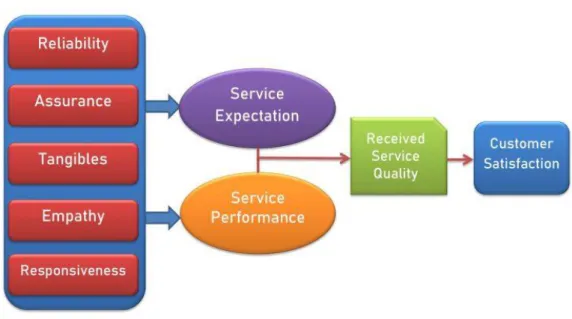
METHODOLOGY
- Introduction
- Sample Overview
- Research Design
- Quantitative Research
- Data Collection Method
- Data Analysis Methods
- Research Instrument
- Survey Questionnaire
- Variables and Respective Measurement Statements
- Data Analysis
- Conclusion
First, Section A includes 11 questions designed to explore basic information about the respondents, including age, gender, income, hometown, and basic information about Chongqing, where the questionnaire was completed, to ensure the authenticity of the respondents. In this study, it is planned to use a random questionnaire form based on questionnaire distribution, use SMARTPLS to input valid sample data into the returned document to form a database, and this document adopts composite reliability, convergent validity and discriminant validity and other statistical methods. Descriptive statistics analysis, which is a basic analysis of the characteristics of the sample population and variables.
The frequency, concentration trends and distribution of the data can be analyzed using statistical software, and the results can be visualized by drawing statistical graphs. This analysis method makes it possible to understand the satisfaction of the public with the property management of public rental housing in Chongqing. After the questionnaire is designed and the respondents selected to distribute it, the quality of the returned questionnaires often varies due to the respondents' personal situation and time and place.
It is generally accepted that if the reliability coefficient of the examined data is greater than 0.7, the data is more credible, and the higher the coefficient, the more credible the data obtained from the survey. Validity analysis is to examine whether the questionnaire designer considers the question extensively when designing it, whether the questions in the questionnaire are relevant, whether the predicted hope data are measured, i.e. the accuracy of the questionnaire, whether it can measure the measured questions reflect and the real situation, as well as the perceptions of the respondents, i.e. the validity of the questionnaire. And there will be one of these variables that will significantly affect the value of that variable, and the high correlation coefficient and strength of the relationship between these two variables also indicates a high degree of relatedness between them.
The t-test is one of the simplest statistical methods for evaluating statistical differences between up to two different samples.

FINDINGS AND DISCUSSION
- Introduction
- Descriptive Statistical Analysis
- Gender
- Age
- Income
- Origin of The Respondents
- Basic Information in Chongqing
- Current Distance from Downtown Of Chong Qing
- Current Distance from The Company
- Pls-Sem Analysis
- Validity and Reliability Results Of Measurement Model
- Validity and Reliability Results of Structure Model
- Coefficient of Determination
- Conclusion
Regarding the age group of the sample, the questionnaire was divided into 5 classes, with 12%. Regarding the origin of the respondents in the sample, most of the respondents were Chongqing locals, with a total of 242 respondents, accounting for 78%, and 67 non-Chongqing people, accounting for 22%. The PLS-SEM for this case was analysis using SMARTPLS, the figure 4.7 showed the Structural Equation Model of 5 dimension of SERVQAUL model to the satisfaction of property management service.
AVE is known as the average variance extracted and is used to measure the convergent validity of the model, while CR is the reliability of a new variable made from the sum of more than one variable for a combined variable. From the table above, each dimension of property service quality and satisfaction corresponds to AVE values are all greater than 0.5 and CR values are all greater than 0.7 which all indicate good convergent validity of data for this analysis. In order to analyze the impact of property service quality on owner satisfaction and the degree of its impact, this paper first conducts correlation analysis between the control variables and to analyze the impact of property service quality on owner satisfaction and the degree of his influence. , this paper first conducted correlation analysis between control variables and research variables, followed by correlation analysis between each dimension of property service quality and satisfaction, and obtained correlations between verification variables.
The R-squared error ranges from 0 to 1, and the closer the value is to 1, the better the model fit. In this chapter, through descriptive statistical analysis, validity analysis, reliability analysis and data correlation analysis, it was found that all five dimensions were significantly and positively correlated with the quality of real estate services, the fit of the indices was tested and it was as expected. This means that the tangibility, responsiveness and empathic dimension of the quality of real estate services have a significant positive effect on the satisfaction of residents.
However, the reliability and security dimension of property service quality has a significant positive impact on resident satisfaction.

CONCLUSION
- Introduction
- Findings in Analysis
- Relationship Between Reliability Level And Property Management
- Relationship Between Responsiveness Level and Property Management
- Relationship Between Assurance Level and Property Management Satisfaction
- Relationship Between Empathy Level and Property Management Satisfaction
- Relationship Between Tangible Level and Property Management Satisfaction
- Implications of The Study
- Limitations of The Study
- Recommendations for Future Research
- Conclusion
Responsiveness refers to the provision of fast and affordable services to tenants and is an important indicator of the quality of real estate management. This may be because the attitude, professionalism and competence of the property management staff in serving the public does not meet the expected standards of the residents. In other words, real estate companies should ensure the competence of their service staff, their awareness and the quality of their property management services.
According to the results of data analysis, the current satisfaction of public housing property management services in Chongqing is influenced by the level of empathy, but tenants' satisfaction in this regard is low, indicating that real estate companies do not meet the standards set by the public in this regard . Property management companies should pay more attention to the individual needs of residents, try to understand the general requirements of residents and act in the best interest of residents. At the same time, the property management team understands the special needs of the tenants and meets the individual needs of the tenants mentioned earlier.
Based on the results of the data analysis, the current tangibles have a positive impact on the satisfaction of property management services. This paper takes property management companies in Chongqing as the research background and tenants in public rental housing communities as the research purpose to investigate the evaluation of property service quality, the evaluation of tenant satisfaction and the relationship between property service quality and owner satisfaction. The development of property management services is not only related to people's livelihood, but also reflects the capacity of national management.
Building a new type of property management service company that can satisfy the public is also a sure way to improve human development. Property Management Service Quality of Shopping Malls in Hong Kong: A Study of Tenant and Customer Satisfaction. Section B The following statements relate to your opinion towards the property management firm currently managing your current residence.
